Good Samaritan clinic fills critical healthcare need for Southeast GA Hispanic community
Maria Solis smiled wide as she rang the golden bell at the Nancy N. and J.C. Lewis Cancer & Research Pavilion. After nearly a year of chemotherapy and radiation treatments, the traces of breast cancer were gone.
Solis’s journey began last October when she received a free regular mammogram screening through the Good Samaritan Clinic at St. Joseph's/Candler in Garden City. The x-rays showed a lump in her breast. Then, an ultrasound and biopsy confirmed that the mass was indeed a cancerous tumor.
When she heard the news, Solis said she “went through a range of emotions.”
“I thought I was going to die,” said Solis through her Spanish translator.
She didn’t know how to tell her family – her three children and husband – about a sickness that she wasn’t sure she’d recover from. “You’re never prepared for something like this.”
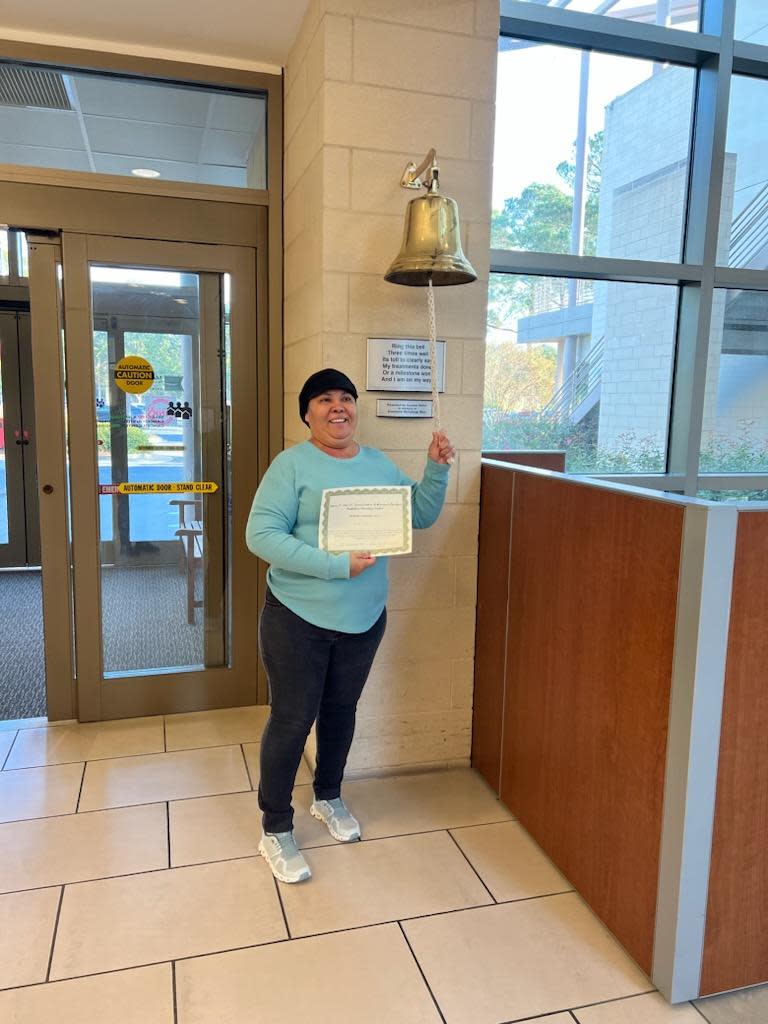
Fortunately, the mammogram caught her breast cancer at a relatively early stage. The Good Samaritan Clinic referred her to local medical centers, Telfair Breast Surgery and Lewis Cancer & Research Pavillion in Savannah, where she received rounds of chemo and radiation for stage 2 lymphatic cancer at no charge. The Telfair Mammography Fund, which provides breast health services to uninsured and underinsured individuals, covered the costs.
For Solis, an uninsured patient, the funding was crucial to her recovery. Without the free screening and the system of care afterward, Solis said she wouldn’t have been able to hear the clangs of the bell a year later.
"Us women should get regular checkups so that we can be treated in order to save our lives," said Solis.
Now, with treatment behind her, one of the first things she wants to do is bake her signature tres leches cake for her family, friends and caretakers at the clinic.
Filling the gaps in healthcare

Since 2007, the Good Samaritan Clinic located on Augusta Road in Garden City, has filled a critical role for the area’s healthcare services. They provide free primary care to uninsured, low-income individuals (less than 200% of the federal poverty level) and are staffed with Spanish speakers to aid the growing Spanish-speaking community. Good Samaritan staff also accommodate patients who speak languages other than English and Spanish by communicating through the CyraCom tablet.
The clinic serves a group of people who, otherwise, can’t afford to see a doctor and face language barriers when they do. That was the case for Solis, who immigrated from Durango, Mexico more than 20 years ago.
More: Savannah physician believes education, easier access to flu vaccines will ease BIPOC mistrust
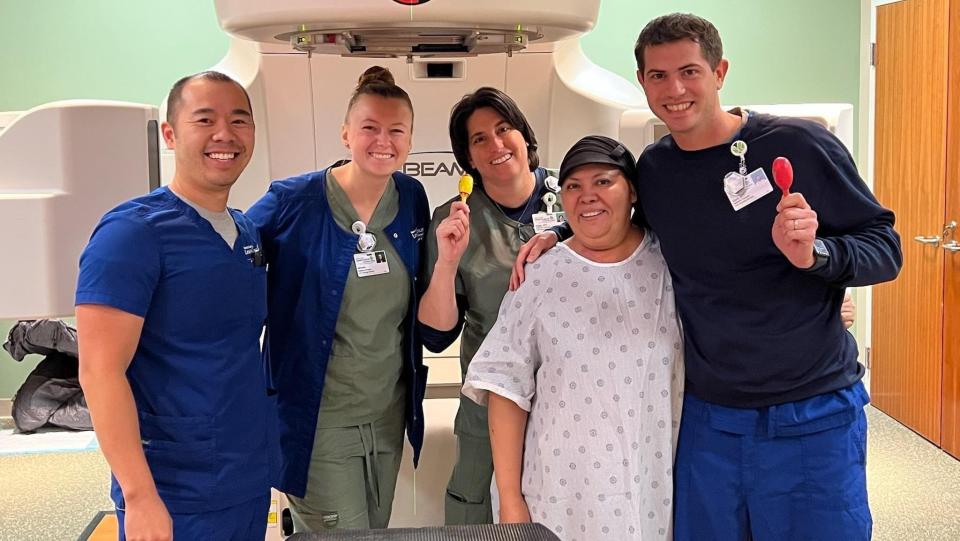
For years, Solis went without regular access to healthcare until, in 2015, she learned about Good Samaritan through a friend. By then, she was needing treatment for diabetes, which can lead to severe health consequences if left uncontrolled. Since then, she’s made the hour-long trips from Metter to Garden City.
Good Samaritan is one of the few clinics within Southeast Georgia that offers free services with a focus on the immigrant community (St. Mary’s Health Center located in Savannah’s Thomas Square neighborhood also offers free services to uninsured, low-income patients).
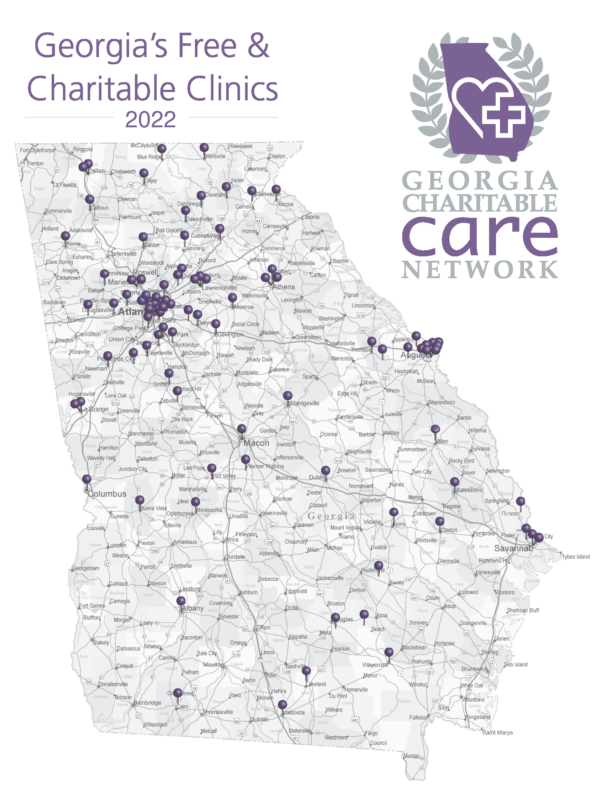
Good Samaritan covers about 1,300 patients annually, a majority of whom are Hispanic and Latino. Some of them travel from cities such as Metter, Claxton, Vidalia (90 miles away) and beyond to receive crucial healthcare services, said Practice Manager Suzanne White.
“Trust is key. They’d rather drive two hours and go somewhere where they feel comfortable than somewhere where they don’t know what the feeling is going to be,” said White.
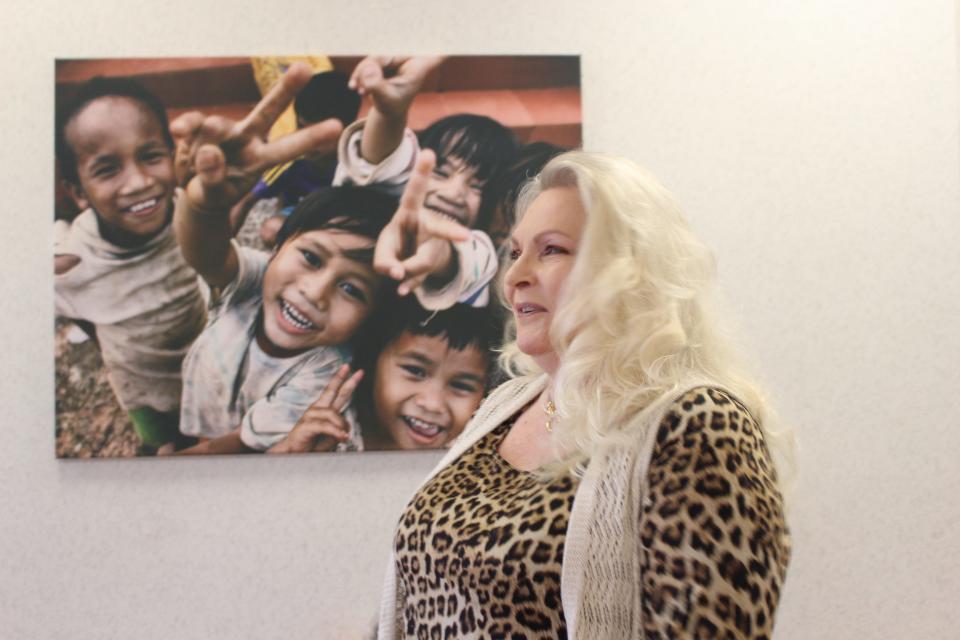
More: How 'promotoras' could help bridge health gap in underserved communities in Georgia
When patients walk in and hear the staff greet them in Spanish, there’s a sense of relief and a sense that they’re “not coming to strangers,” said White.
At Good Samaritan, medical care often involves a blend of education and cultural understanding. A disproportionate number of their patients suffer from undiagnosed diabetes, according to White. In the Hispanic and Latino community, Type 2 Diabetes is more prevalent due to a range of socioeconomic factors. In addition to prescribing insulin treatment, the staff educates patients on diet and exercise.
"Not going to a doctor frequently enough, not thinking it's an issue and then feeling like there's nothing wrong with you — all those things apply (to undiagnosed diabetes)," said White.
The clinic often feels like home to its regular patients. Together, they celebrate Hispanic Heritage Month and patients bring in homemade meals abundant enough to be "eaten for days" at the office. Patients feel that their caretakers, who are ultimately responsible for their lives, also understand where they are coming from culturally.
"They feel like they're coming to someone who's connected to them in some kind of way," said White, "It becomes a very close bond."
Serving the undocumented community
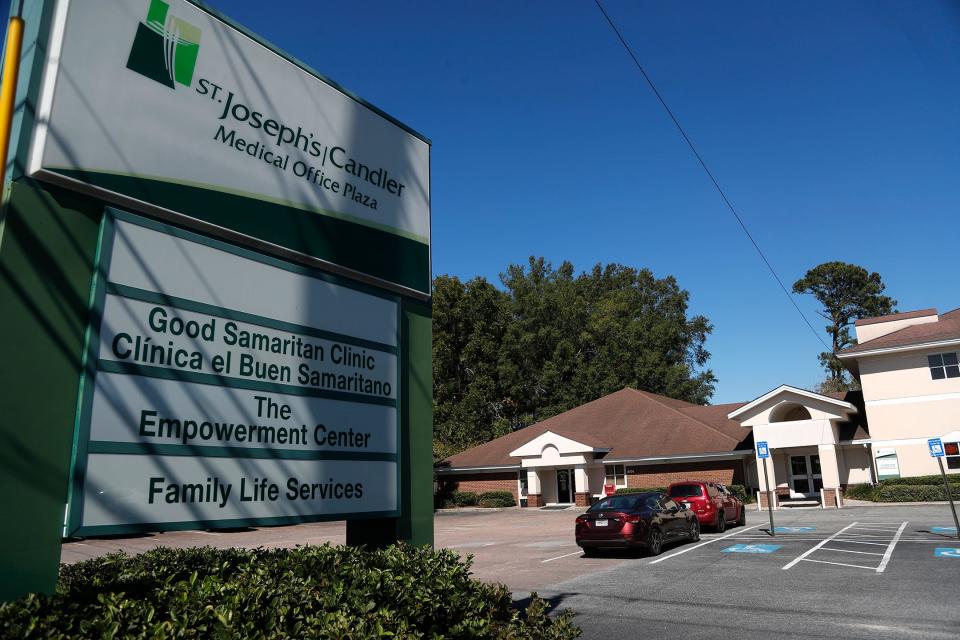
Good Samaritan began as an all-volunteer operation targeted toward serving the growing Hispanic and Latino population in Chatham County and the surrounding region. In the early 2000s, demographics were shifting statewide. Between 1990 and 2000, the foreign-born population doubled in Georgia. And, the burgeoning southeast, especially, was becoming a destination for immigrants for a variety of reasons, including economic opportunity and lower cost of living.
Since the early 2000s, the Hispanic and Latino population more than doubled in Chatham County and surrounding counties. They now make up about 8% of Chatham County residents. In Garden City, where the Spanish-speaking population is most concentrated, that number is 26%.
Sister Margaret Beatty, who recently retired as vice president of Mission Services of St. Joseph/Candler’s Health System, described how the community began noticing the shifts.
More: Once home for Cajun Catholics, storied Chatham church now spiritual heart of hispanic community
Local churches, which serve as community gathering spots, were one of the first to see the changes. Our Lady of Lourdes Church in Port Wentworth, which offers the only Spanish-language mass on the county’s booming west side saw its Spanish-speaking membership balloon in the early aughts.
With the population growth, Beatty said they began to see "a need that was not being met."
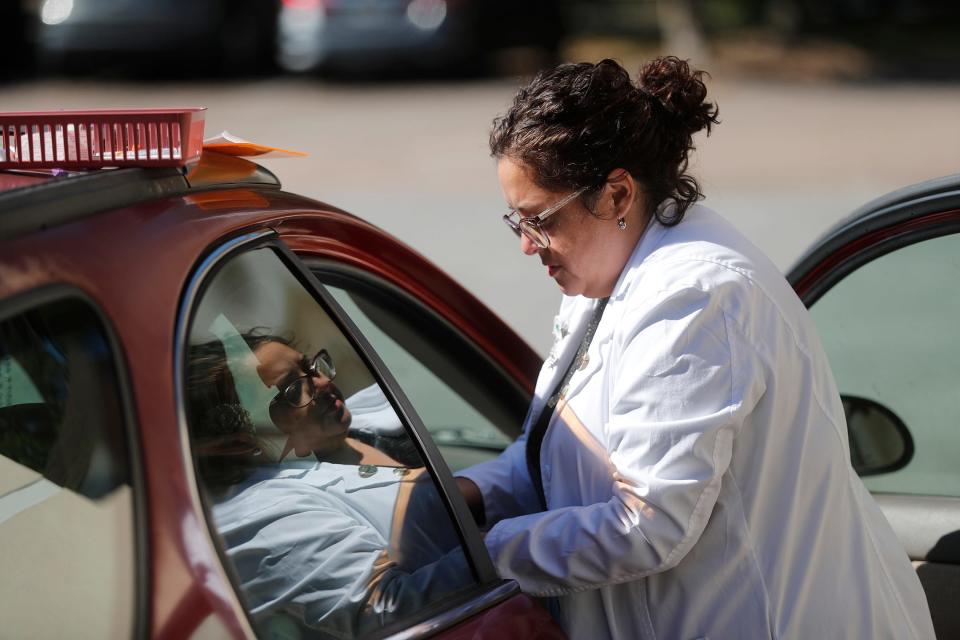
Among the immigrants coming to the area, a portion was undocumented and lacked sufficient access to healthcare. Because of legal status, they’re not eligible for marketplace insurance plans or government-funded Medicaid in the state of Georgia, though many have jobs and pay taxes. Private health coverage is often too costly. Thus, undocumented immigrants compose the largest group of uninsured individuals in the U.S.
Church leaders from Our Lady of Lourdes and staff from St. Joseph’s/Candler Health System, the largest healthcare system in Southeast Georgia, partnered together to establish the Good Samaritan Clinic, which would tap into this underserved community through free services and a bilingual staff.
At first, the clinic operated once a week, offering free primary care services to uninsured and low-income patients. The clinic was run by a dedicated group of volunteer nurses and staff who worked tirelessly every Wednesday night, Beatty said. But the need for a more formal operation grew.
The more patients the clinic saw, the more the health disparities became apparent.
“People had come from countries with poor health access or no access,” said Sister Patricia Baber, director of the Good Samaritan Clinic and St. Mary’s Health Center (and its community center in the Cuyler-Brownsville neighborhood). “We knew that there could be chronic diseases that will eventually lead to major health issues if not taken care of.”
Good Samaritan eventually extended its hours to five days a week and expanded its network of special care physicians who would continue to take patients at no cost, most of whom are under the St. Joseph’s/Candler Health System. That network has now blossomed into more than 80 specialty care practices such as cardiologists and neurologists, according to Baber, who works as a liaison between the free clinics and their partners.
More: New nonprofit Migrant Equity Southeast advocates for migrants and refugees in Chatham
Over the last decade and a half, the clinic has established itself as a safety net for those who would normally fall through the cracks of the healthcare system. Like White, Baber emphasized the importance of trust in their practice.
“It’s imperative. Over time now, our patients trust our staff implicitly,” said Baber, “It’s important that when they raise the question, we try to find the right answers and clarify so that they don’t have to be afraid.”
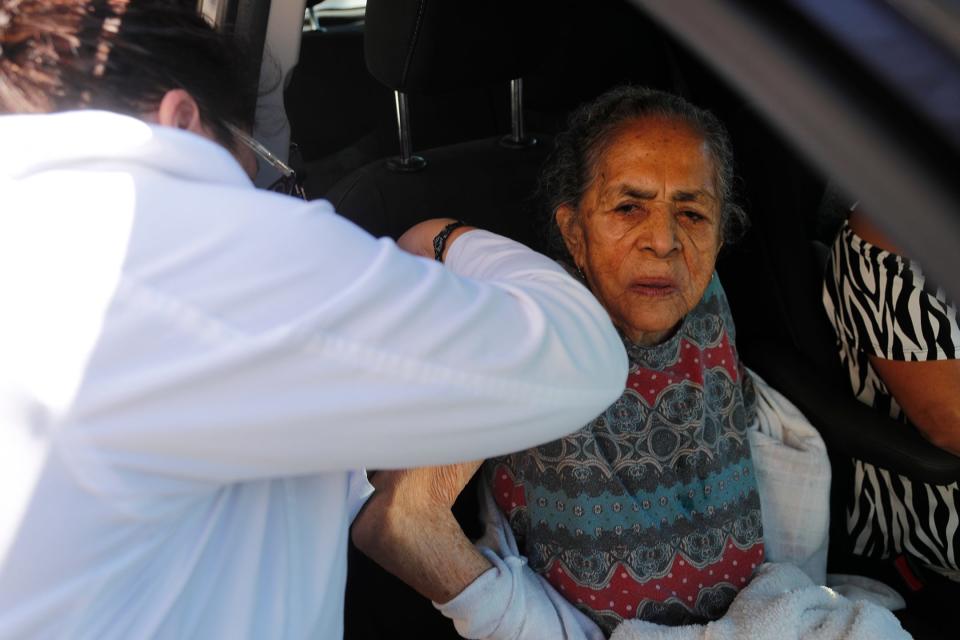
More: Physician: Fight to eradicate COVID-19 is lost. 'Winning' defined by mitigation, treatment
Such was the case when COVID-19 vaccines became available. Some patients were concerned that registration could expose their immigration status, said Baber. Staff at the clinic assured that documentation of their immigration status wouldn’t be required and that, regardless, their information would be protected under HIPAA laws.
“They’re afraid to step out and bring attention to themselves, just in case,” said White. “Someone in the household may be undocumented or they may be working on their immigration status.”
Those fears are not unfounded. Policy changes under the previous presidential administration lead to tighter immigration enforcement and local governments were encouraged to enforce federal immigration laws, leading to a rise in deportations between 2017 and 2018. That practice heightened fears among immigrant families about seeking services including health coverage and care, according to Kaiser Family Foundation, a non-profit health news source.
Individuals have a right to healthcare regardless of immigration status and healthcare facilities are considered "sensitive locations," but not everyone knows that, said Daniela Rodriguez, who leads the local nonprofit Migrant Equity Southeast (MESE).
"It's common to see that people don't know their rights to healthcare," said Rodriguez, "and not all facilities know how to use immigrant-friendly language — that means asking for an ID and not necessarily a Georgia driver's license from a patient."
Under the current administration, however, ICE removal numbers have fallen, along with fear and uncertainty about seeking crucial services such as healthcare.
“Now that the climate has changed," said Baber, "the word of mouth is ‘go there [Good Samaritan], you can trust them and they’re going to respond to your needs.”
A continuing need
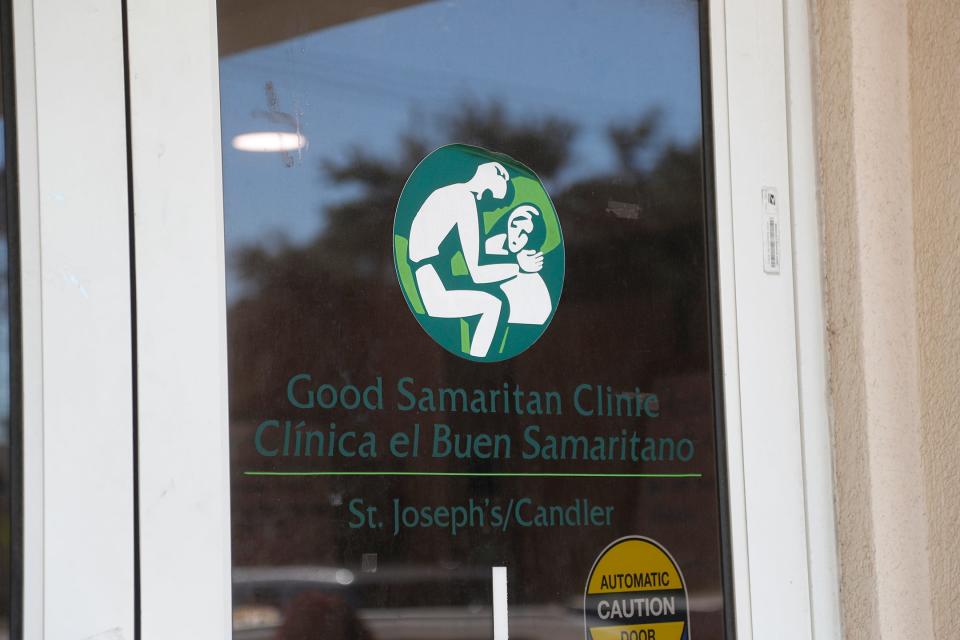
Good Samaritan has plans to grow, said White, the practice manager. The need for better healthcare is true for the entire state of Georgia, which ranks near the bottom (46th in the U.S.) in terms of access to quality healthcare and preventive care, such as screenings.
For those living in the southeast region of the state, Chatham County is one of the largest providers of healthcare access, whether that’s in numbers of physicians, hospitals, free clinics or specialty care. Surrounding rural counties lack those resources and, in recent years, have seen a record number of their hospitals close.
In a pocket of the state where healthcare access is limited and the uninsured rate surges, clinics such as Good Samaritan and St. Mary’s are much needed.
Beatty, the retired VP of Mission Services, emphasized how helping the most disadvantaged communities is a benefit for the entire general population as well.
“It’s to their benefit, it’s to our whole community’s benefit that we provide good health care,” said Beatty.
Nancy Guan is the general assignment reporter covering Chatham County municipalities. Reach her at nguan@gannett.com or on Twitter @nancyguann.
This article originally appeared on Savannah Morning News: Good Samaritan Clinic lowers barriers to healthcare for Hispanic community

